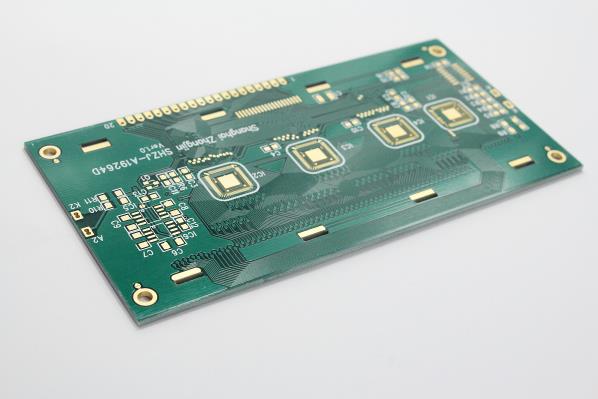In the past few decades, our path has changed. This change is that vehicles become more and more intelligent. The benefits of this are many, including the significant work of shifting operational and safety responsibilities from the driver to the car system. For example, many vehicles now have automatic braking systems, such as automatic emergency braking (AEB), to try to slow the vehicle to avoid an emergency.
Even more revolutionary are electric cars and self-driving cars on the road. Although EVs and AVs are based on different technological advancements, both are possible and both rely on circuit boards that provide monitoring, control, and drive for the mechanical systems that implement automotive functions.
In order to meet the intelligent operation requirements of advanced automotive systems, specific basic automotive PCB design guidelines must be followed, which we have introduced in this article. These guidelines can be best understood by first exploring the challenges of designing circuit boards for these vehicles.

Advanced automotive system design challenges
The main consideration when designing automotive systems and other key industry system electronic products, such as aerospace and medical systems is safety. Therefore, your PCBA design, manufacturing and testing must comply with automotive industry standards and regulations. In addition to providing general safety for drivers, these documents also help solve the challenges of designing PCBAs for electric vehicles and electric vehicles, as described below.
The number of consumers who choose to abandon internal combustion engine vehicles and purchase electric vehicles (including battery electric vehicles (BEV), hybrid electric vehicles (HEV) and plug-in hybrid electric vehicles (PHEV)) has been steadily increasing, and these vehicles are more environmentally friendly. Usually grow with a higher MPG rating. There are many reasons for this trend. However, the most important factors may be comparable performance, range autonomy and price, and lower repetitive costs. However, designing circuit boards for these vehicles is not without challenges.
1. High voltage and high current
Since one or both of high voltage and high current are used for charging and storage at the same time, the operation of the EV system must include a circuit board that can process, convert, and distribute electrical parameters at multiple levels. Like the industrial environment, automotive high-voltage boards are susceptible to problems caused by surface tracking and arcing. For the following reasons, arcing on high current plates may also be a problem. Crawling and gap distances do not meet the standard requirements.
2. Thermal resistance
One or both of the high-voltage board and the current board typically use high-power components that generate higher than average heat volumes. Therefore, good thermal resistance management is essential to your car design.
When designing an AV, high voltage, high current, and thermal issues are all important considerations. However, the challenges discussed below have attracted greater attention.
Safety is an important issue for autonomous vehicles, especially for vehicles of level 3 or higher. At these levels, self-driving cars can control most vehicle operations, including autonomous driving. Therefore, reliable operation is at the top of the list of challenges facing AV PCBA designs. For example, the AV object avoidance system may cause accidents. Another major issue that is the same as the circuit board design of all automotive systems is the structural integrity of the circuit board to withstand shock and vibration.
It is necessary to design and follow a series of guidelines to mitigate or eliminate the negative impact of EV and AV challenges, which will be discussed in the next section.
As mentioned above, there are obvious challenges when designing boards for AV and EV. Fortunately, there is a set of automotive PCB design guidelines that, if followed, will go a long way in ensuring that your circuit board development produces high-quality, reliable PCBAs.
1. Understand and follow automotive design standards
The first requirement for designing a circuit board that meets the requirements of advanced automotive systems is to understand and follow the applicable standards, such as the IPC-6012DA automotive standard.
2. Perform thermal analysis and optimize heat dissipation and distribution
It is imperative to apply for a good PCB heat dissipation design technology including manufacturing considerations. However, the biggest concern is the heat dissipation technology, because one or both of the high voltage and high current components may generate hot spots on the board.
3. Observe good grounding rules
Another important consideration when designing automotive system boards is grounding. Since the vehicle does not touch the ground, its electronic system must be designed to use chassis grounding technology.
4. Make sure your CM partner has an agile manufacturing process
Automotive systems are composed of many elements, many of which are both circuit boards and electronic components. Designing PCBA processing for these complex systems may be a dynamic process that must be adjusted according to changes in performance, operation, or other goals. The best way to ensure that the development process can respond quickly in this environment is to work with a CM integrated CM. Agile manufacturing capabilities.
5. Work with your CM throughout the design process
Using the right CM for work is critical to optimizing your automotive PCBA development. Moreover, this relationship should start from the design and exist throughout the development process so that your design intent is accurately merged and reflected in the final product at each stage.